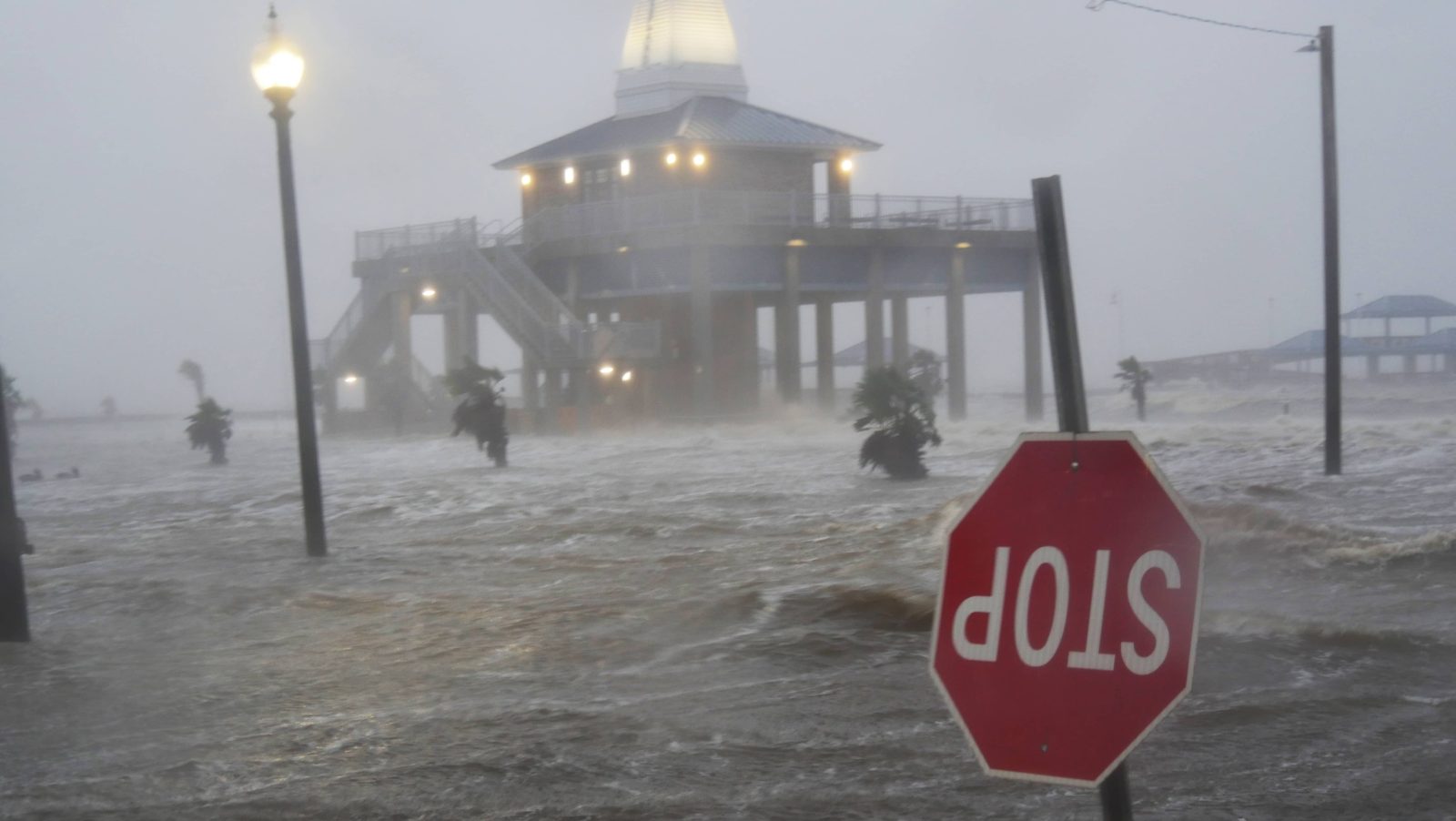On Monday, the Federal Emergency Management Administration, or FEMA, announced a new pot of funding for victims of flooding in four states that got pummeled when Hurricane Ida slammed into the Gulf Coast last August and moved inland up through the Northeast in remnants. Starting April 1, the agency will open up $60 million in flood assistance grants to Louisiana, Mississippi, Pennsylvania, and New Jersey, with $40 million of that money earmarked for Louisiana — a state that’s home to six of the 20 most at-risk counties in the country for flooding. New Jersey will receive $10 million, and Mississippi and Pennsylvania will get $5 million apiece.
“In recent years, so many communities around our nation have been damaged by storms and floods,” Vice President Kamala Harris said at a press conference in Sunset, Louisiana, on Monday, where she announced the new funding. “Our administration is committed to helping all communities to prepare for, to respond to, and to recover from extreme weather.”
The $60 million fund, called the Swift Current initiative, will be administered through FEMA’s Flood Mitigation Assistance Program and is part of $3.5 billion allocated for flood mitigation assistance grants by the bipartisan infrastructure law signed by President Joe Biden last fall. It’s the first FEMA project to get funded by the bill.
The president had originally hoped Congress would be approving another, bigger bill with a lot more money in it for emissions reduction and climate adaptation efforts. But the Build Back Better Act and its $555 billion in climate spending are currently stalled in the Senate. So the Biden administration is using the few tools available to deliver on its promise to advance environmental justice and climate action at the federal level.
FEMA’s new tranche of money for flood-prone homes is evidence of that. Individuals in the four states chosen by FEMA who own homes and properties that are insured by the National Flood Insurance Program and were substantially damaged by Hurricane Ida or have repeatedly flooded will be eligible for the money. FEMA will prioritize homes that are worth less than $750,000 so that the funding can be stretched between many properties. The grant funding, which will be distributed by local governments, can go toward one of five flood mitigation categories, including elevating buildings off the ground, retrofitting them, and making them more resilient to water.
The funding can also go toward a sixth category: “property acquisition and structure demolition/relocation.” In non-agency speak, that means the federal government will either pay homeowners for their land and tear down the house built on it or pay to have the house moved. As storms become more intense and seas rise, parts of the coastline in the U.S. will become so inundated by water that living there will become impossible. That means people will have to move, or retreat, from these areas.
The Swift Current initiative is both an acknowledgment that retreat is a reality for some people and evidence that the federal government isn’t ready to incentivize or mandate retreat from flood-prone areas. It’s up to towns to decide what kind of projects they want to submit for grant money, so there’s no saying how many individual homes will end up receiving buyouts thanks to this program. “A lot will depend on which communities come in for funding,” Anna Weber, a policy analyst at the Natural Resources Defense Council, told Grist. “If it’s a town where the local government is really interested in buyouts and a lot of residents think it’s the right choice, then you could see that happen.”
Swift Current will be administered in a way that complements the Biden administration’s effort to direct 40 percent of the benefits of its climate and environment programs toward disadvantaged neighborhoods, FEMA told CNN, by shouldering 90 percent of the cost share of rebuilding “substantially damaged” homes in “socially vulnerable” communities. A substantially damaged home is one where the cost of restoring the structure to its pre-disaster condition would equal or exceed 50 percent of the market value of the house. The agency typically takes on 75 percent of the cost of substantially damaged homes, but the remaining 25 percent can still be prohibitively expensive for many homeowners. For properties that have flooded more than twice, FEMA said it will cover between 90 and 100 percent of the cost of rebuilding, depending on the severity of the flooding.
“The Swift Current initiative represents FEMA’s commitment to quickly and equitably getting hazard mitigation funding to the communities who need it the most,” FEMA Administrator Deanne Criswell said in a statement.
While it’s a good start, the $60 million isn’t enough funding to match the scale of the flooding crisis in the U.S. Extreme flooding fueled by climate change already costs the U.S. roughly $32 billion a year. A recent study showed that, by 2050, that financial burden could rise 26 percent to $41 billion a year, and a majority of that risk will fall on predominantly Black communities. “Sixty million dollars is nowhere near enough to make a dent even in addressing the most flood-prone properties in the nation,” Weber said. “But in the bigger picture, this is a situation where FEMA is trying out something new, so it makes sense that they’re only looking at a limited pool of funding.” Depending on how Swift Current goes, FEMA says it could make similar funding available to more states. And the agency provides more money for flood mitigation in states via other streams of funding every year.
However, in some places, no amount of federal funding will be able to stave off flooding brought on by rising sea-levels. Eventually, people in those areas will have to leave their homes. That’s a problem that FEMA can’t tackle alone. Managed retreat, the coordinated movement of people, assets, and infrastructure from coastlines further inland, will require stronger leadership and a holistic, all-of-government approach, Weber said. “Managed retreat isn’t the jurisdiction of any single federal agency or person,” she added. “I think that we’re going to need a lot more coordination and collaboration if we’re going to have something that actually addresses communities’ needs.”




